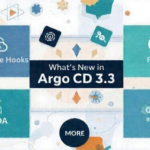
AI agents are quickly moving from research labs into real-world applications—powering everything from customer service bots to complex task automation systems. But if you’re new to this space, it can be hard to know where to begin. The good news? You don’t have to start from scratch. Thanks to two incredibly valuable resources—the AI Agent Starter Kit GitHub repository and the AI Agents Expert Guides Substack post—you can now learn directly from the best in the field.
These resources combine expert insights from OpenAI, Anthropic, and Google, helping you understand not just how AI agents work, but how you can start building them yourself. Let’s take a closer look.
A Curated Collection of Guides on GitHub
The AI Agent Starter Kit is a public GitHub repository that compiles official, high-quality documentation from top AI organizations. Inside, you’ll find foundational resources created by the same teams who built popular models like ChatGPT, Claude, and other cutting-edge AI tools.
This starter kit is organized into folders, each containing PDF versions of expert-authored guides. Here are a few highlights:
- OpenAI’s “Practical Guide to Building Agents”: This document explains the core components of an agent—such as planning, execution, memory, and iteration. It provides step-by-step suggestions for building agents that can think and act in dynamic environments.
- Anthropic’s “Building Effective Agents”: This guide walks you through designing AI agents using Claude, with a focus on safety, memory linking, and tool usage.
- Google’s “Prompting 101” and “Agents Companion”: These guides are packed with practical advice on crafting prompts, designing agent pipelines, and evaluating performance in real-world use cases.
Together, these documents cover all the key ideas you need to understand to go from zero to building your first AI agent.
One-Click Download for All Guides
While the GitHub repo is great for exploring individual documents, some people may prefer a more streamlined experience. That’s where the AI Agents Expert Guides Substack comes in.
This Substack post provides a one-click ZIP download of all the expert guides compiled from the GitHub repository. It’s ideal for those who want to access everything offline or organize the documents for team study sessions, workshops, or personal learning.
The Substack also gives a short introduction to each guide, helping you decide which one to read first based on your goals—whether you’re learning how to prompt effectively or designing a multi-step task planner.
This download package includes:
- Agent building frameworks
- Prompt engineering guides
- Real-world use case collections
- Best practices for tool integration and memory
With everything bundled together in one ZIP file, you don’t need to jump between multiple tabs or repositories.
Why These Resources Matter
One of the biggest challenges in AI development today is the lack of clarity on how to actually build agents that work. Many tutorials only scratch the surface or focus on toy examples. These guides go deeper—they are the actual documents used by internal teams at OpenAI, Google, and Anthropic to build real AI systems.
These resources are designed to teach you:
- How agents plan and decide what to do next
- How memory works in an agent so it can refer to past conversations
- How to use tools, like a web browser or calculator, as part of the agent’s process
- How to refine outputs with feedback loops and iterative thinking
In short, they move you from “basic prompt engineer” to someone who can design intelligent systems capable of real problem-solving.
Even better, they are free, publicly available, and meant to be shared for learning purposes. Whether you’re building a smart assistant, automating business processes, or experimenting with AI agents in your own startup, these materials give you a strong foundation.
How to Get Started with These Resources
If you’re not sure where to begin, here’s a simple plan:
- Clone or download the GitHub repository: Start by exploring the folders and reading through the summaries of each guide. Pick one that feels most relevant—if you’re building an agent for task automation, OpenAI’s planner-executor model is a great place to start.
- Download the ZIP file from the Substack: This gives you easy offline access to all the PDFs. You can read them on your own time, share them with teammates, or keep them as references while you’re building.
- Experiment with small prototypes: Use what you’ve learned to build a basic agent—one that can plan a task, respond to queries, or retrieve data. Many open-source libraries support tool use and memory (like LangChain or AutoGen), so you can apply these guides to real code right away.
- Reflect and iterate: The guides don’t just teach you to build—they teach you how to test, evaluate, and improve your agents. You’ll learn how to use reflection loops, memory buffers, and modular planning to take your AI project from idea to execution.
Final Thoughts: Learn from the Best, Build What Matters
AI agents are becoming the next big shift in how we interact with technology. From intelligent customer support to autonomous research assistants, the possibilities are endless. But building good agents requires more than just knowing how to prompt—you need to understand architecture, memory, and decision-making.
Thanks to the GitHub Starter Kit and the Substack ZIP bundle, you now have direct access to the same materials that the top AI teams use. You don’t need a PhD or years of experience to get started—just curiosity, some reading time, and a willingness to build.
So go ahead. Download the guides. Read through a few. Try building a small agent. Whether you’re a student, a developer, or an innovator with an idea, this is your chance to learn from the best and start building something incredible.
Helpful Links
📂 GitHub Repository: AI Agent Starter Kit
📥 ZIP Bundle Download: AI Agents Expert Guides Substack
Follow us for more Updates










